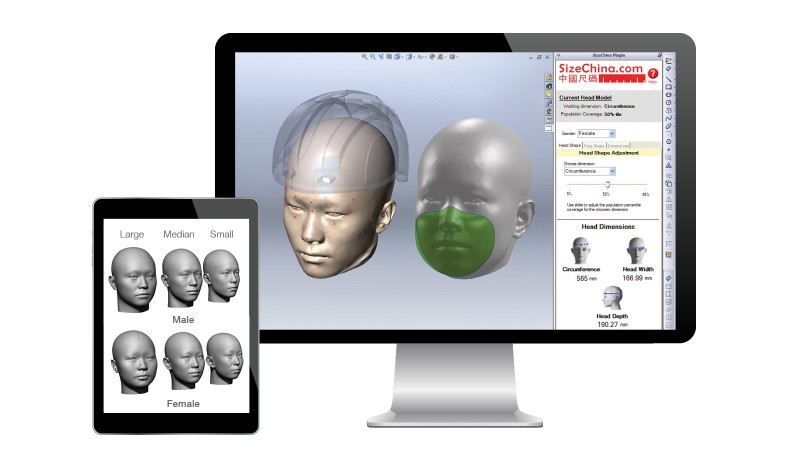Sizing products for Chinese
SizeChina FaceForm, a novel 3D design and evaluation tool developed by the School of Design, helps designers produce head and face products that specifically fit the Chinese population.
Designing products to fit the human body is no easy task. Accurate anthropometric information is necessary, and the type of information available is crucial. For instance, one-dimensional body measurements are widely used to design products such as furniture. However, these information do not provide sufficient detail to produce well-fitting head and face products.
Recently, the availability of 3D models of the human body has made the task easier, but those models are based on data from Western 3D body scans, including head and face scans. This means that products such as helmets and facial masks might not fit Chinese head shapes, a problem that Dr Luximon Yan and her research team from the School of Design, sought to address.

Dr Luximon Yan pictured with various
3D head templates
The research team created a new 3D design and evaluation tool called SizeChina Faceform, based on a database of anthropometric data collected from more than 2,000 Chinese adults located around the country. Researchers selected sample head scans and used the dimensions as a reference to create small, medium and large face templates for both men and women.
The team also created a user-friendly interface using the Solidworks computer-aided design software, to make it simple for designers to use the face templates for designing and evaluating products. The interface has three main tabs that allow the designer to select templates with the appropriate head dimensions, face dimensions and face shape, as well as the gender that fit for Chinese people.
Once a suitable head and face shape template is selected, a 3D headwear product design file can be imported. The 'product' can then be simply overlaid onto the template to check the fit and identify where changes are needed to fit the Chinese head shape. The software can also be used to design products from scratch, ensuring a better fit from the beginning of the process rather than at the final evaluation stage.
This digital design tool is an excellent example of how innovative research can be translated into practical products for the benefit of industry and society. Well-fitting products like helmets are not only more comfortable to wear, but can also help save lives. The researchers plan to develop the software further so that it can be used to design products for other parts of the body, such as footwear.

